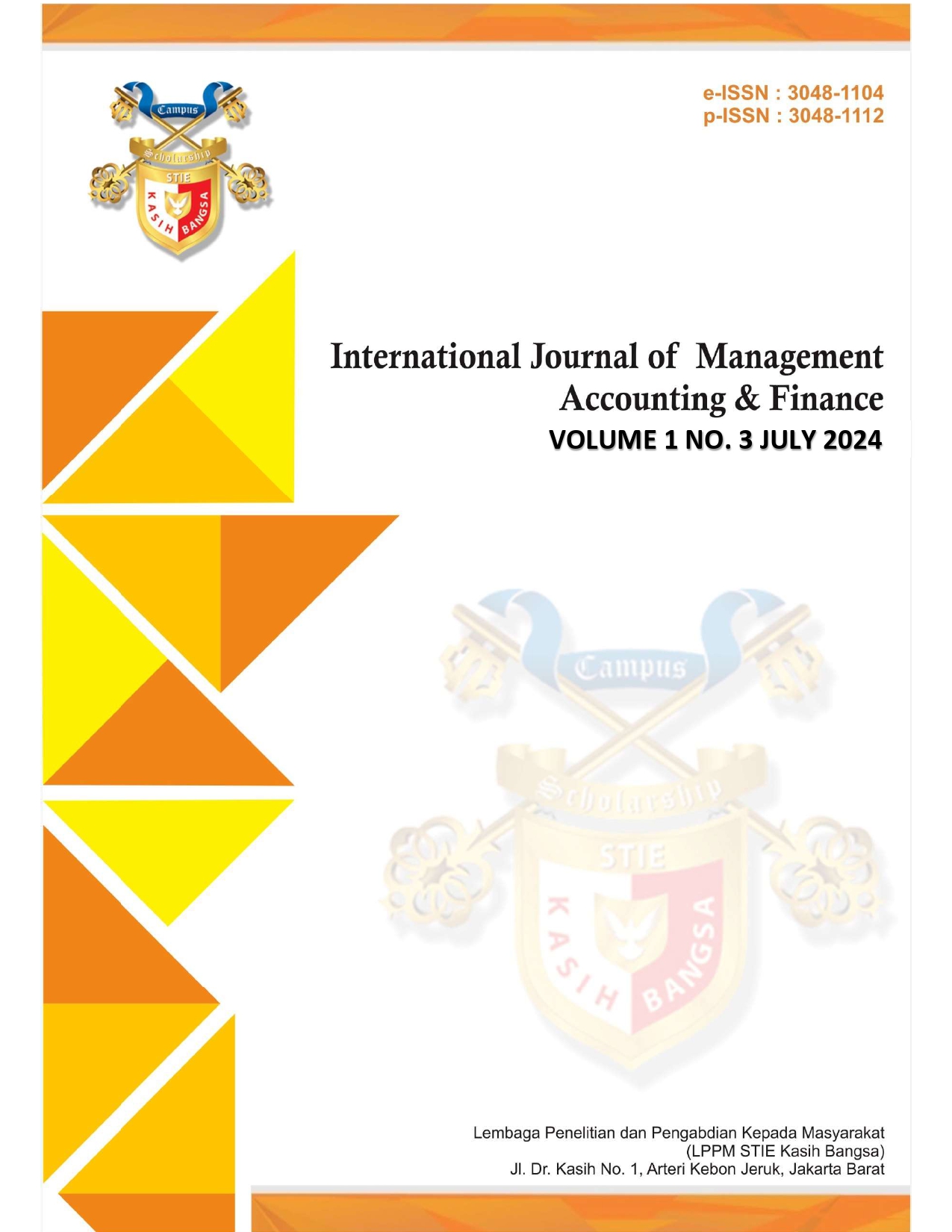Advances and Challenges in Predicting SME Failures: A Literature Review on Methodological Trends, Data Imbalance Solutions, and Model Validation Practices
DOI:
https://doi.org/10.70142/kbijmaf.v2i1.267Keywords:
SME failure prediction, Machine learning models, Data imbalance, Model validation, Predictive analyticsAbstract
This qualitative literature review explores the advances and challenges in predicting SME failures, focusing on methodological trends, data imbalance solutions, and model validation practices. Over recent years, machine learning techniques have gained prominence, replacing traditional statistical models and improving predictive accuracy. Key strategies for overcoming data imbalance, such as Synthetic Minority Over-sampling Technique (SMOTE) and cost-sensitive learning, have also been highlighted. However, challenges persist, particularly in model interpretability, generalization, and overfitting. The review emphasizes the need for continuous refinement of predictive models and validation practices to ensure real-world applicability. The findings suggest that while considerable progress has been made, future research should aim to enhance model transparency and address limitations in data representation to improve SME failure prediction across diverse contexts.
References
Abdullah, N. A. H., Ahmad, A. H., Zainudin, N., & Rus, R. M. (2016a). Modelling small and medium-sized enterprises’ failure in Malaysia. International Journal of Entrepreneurship & Small Business, 28, 101–116. https://doi.org/10.1504/IJESB.2016.075686
Abdullah, N. A. H., Ahmad, A. H., Zainudin, N., & Rus, R. M. (2019). Predicting financially distressed small- and medium-sized enterprises in Malaysia. Global Business Review, 20(4), 627–639. https://doi.org/10.1177/0972150919837053
Abedin, M. Z., Guotai, C., Hajek, P., & Zhang, T. (2022). Combining weighted SMOTE with ensemble learning for the class-imbalanced prediction of small business credit risk. Complex & Intelligent Systems, 9(4), 3559–3579. https://doi.org/10.1007/s40747-021-00614-4
Altman, E. I., Balzano, M., Giannozzi, A., & Srhoj, S. (2022). Revisiting SME default predictors: The omega score. Journal of Small Business Management, 61(6), 2383–2417. https://doi.org/10.1080/00472778.2022.2135718
Altman, E. I., Sabato, G., & Wilson, N. (2022). The Omega score for SME failure prediction: A new approach. International Journal of Forecasting, 38(2), 346–360. https://doi.org/10.1016/j.ijforecast.2021.06.005
Amelia, Y., Kusnanto, E., & Permana, N. (2023). Pengaruh pengetahuan keuangan, sikap, dan kepribadian terhadap perilaku manajemen keuangan pelaku UMKM. Jurnal Ekobistek, 12(2), 533–538. https://doi.org/10.35134/ekobistek.v12i2.533
Angelini, E., DiTollo, G., & Roli, A. (2008). A neural network approach for credit risk evaluation. The Quarterly Review of Economics & Finance, 48(4), 733–755. https://doi.org/10.1016/j.qref.2007.04.001
Chai, Y., Li, Z., & Li, J. (2019). Multicriteria credit rating prediction for small- and medium-sized enterprises: A hybrid model. Expert Systems with Applications, 126, 74–88. https://doi.org/10.1016/j.eswa.2019.02.009
Chaidir, M., Yulianti, G., & Santoso, S. (2024). Dampak digitalisasi terhadap inovasi teknologi pada usaha mikro, kecil, dan menengah. Jurnal Visi Manajemen, 10(2), 74–87. https://doi.org/10.56910/jvm.v10i2.523
Cheraghali, H., & Molnár, P. (2023). SME default prediction: A systematic methodology-focused review. Journal of Small Business Management, 62(6), 2847–2905. https://doi.org/10.1080/00472778.2023.2277426
Ciampi, F., Cillo, V., & Fiano, F. (2020). Combining Kohonen maps and prior payment behavior for small enterprise default prediction. Small Business Economics, 54, 1007–1039. https://doi.org/10.1007/s11187-018-0117-2
Ciampi, F., Giannozzi, A., Marzi, G., & Altman, E. I. (2020). Rethinking SME default prediction: A systematic literature review and future perspectives. Scientometrics, 126(4), 2141–2188. https://doi.org/10.1007/s11192-020-03856-0
Cornée, S. (2019). The relevance of soft information for predicting small business credit default: Evidence from a social bank. Journal of Small Business Management, 57, 699–719. https://doi.org/10.1111/jsbm.12318
Costa, E., Giudici, P., & Antonucci, R. (2022). Validation of SME credit risk models using machine learning techniques: A comprehensive review. Journal of Risk and Financial Management, 15(3), 85–101. https://doi.org/10.3390/jrfm15030085
Kusnanto, E., Qalbia, F., & Amelia, Y. (2024). Dampak penghindaran pajak terhadap struktur jatuh tempo utang pada UMKM. Jurnal Visi Manajemen, 10(1), 16–27. https://doi.org/10.56910/jvm.v10i1.521
Rizal, M., Ruslaini, R., & Kusnanto, E. (2022). Peran regulasi dalam mendorong adopsi cloud computing UMKM DKI Jakarta. Journal of Business, Finance, and Economics (JBFE), 3(1), 130–136. https://doi.org/10.32585/jbfe.v3i1.5707
Ruslaini, R., Kasih, E. W., & Santoso, S. (2024). Kajian literatur adopsi cloud computing pada UMKM: Perspektif strategis dan dinamika dalam satu dekade. Jurnal Visi Manajemen, 10(3), 231–245. https://doi.org/10.56910/jvm.v10i3.526
















